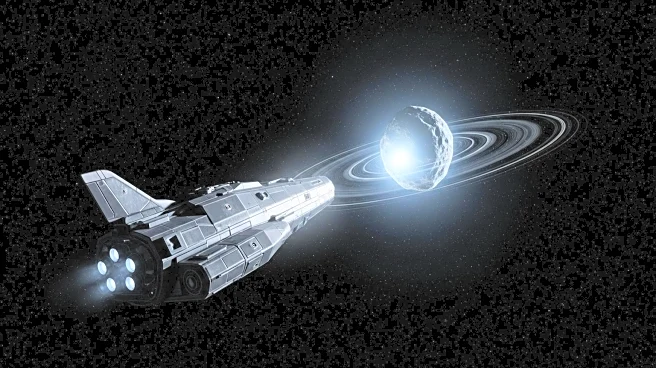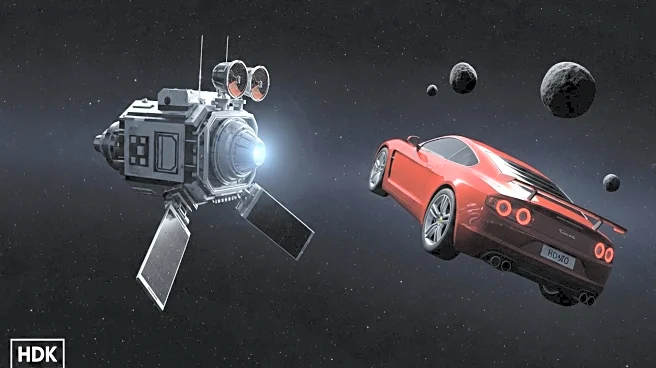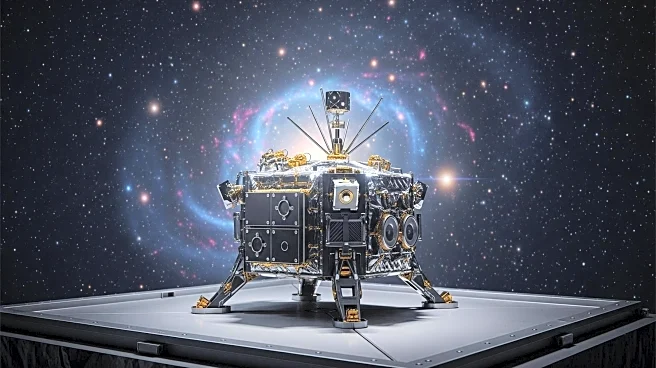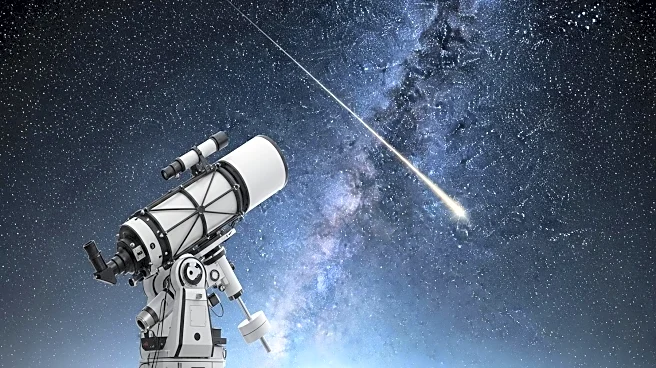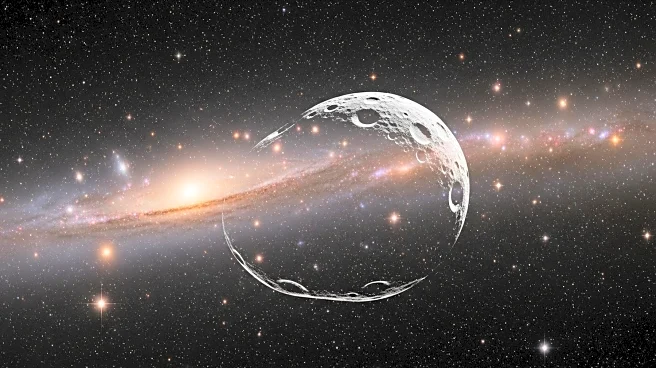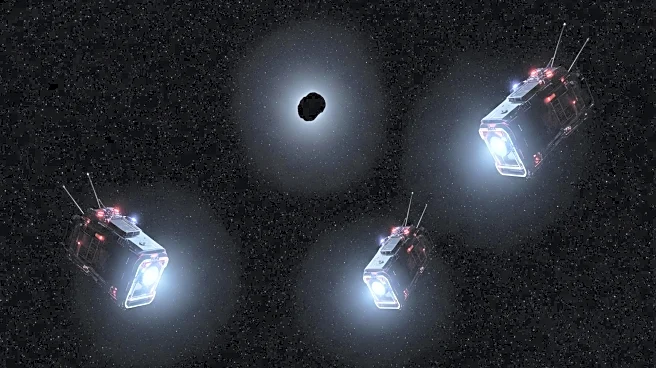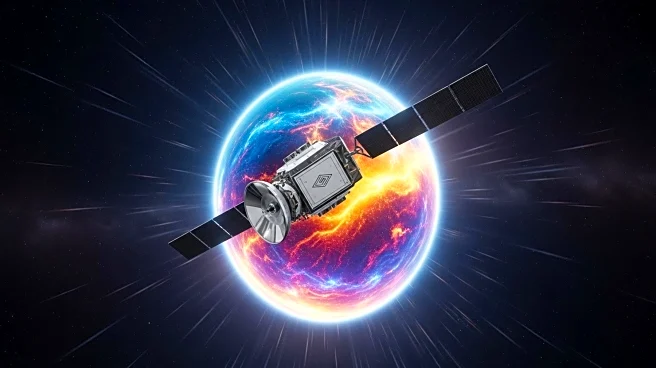What's Happening?
NASA's DART mission has successfully demonstrated the ability to alter an asteroid's trajectory through a kinetic impactor. The spacecraft collided with the asteroid moon Dimorphos, ejecting 35.3 million pounds of rock and dust into space. This debris formed a tail visible for nearly 12 days post-impact, resembling a comet's tail. The collision significantly altered Dimorphos' orbit around its parent asteroid, Didymos, shortening it by 33 minutes. This outcome showcases the potential of kinetic impactors to not only strike asteroids but to use the resulting ejecta to amplify the deflection effect. The mission's success has sparked new discussions and research efforts focused on enhancing planetary defense strategies.
Why It's Important?
The DART mission represents a significant advancement in planetary defense capabilities, demonstrating that kinetic impactors can effectively alter an asteroid's path. This is crucial for protecting Earth from potential asteroid threats, which could cause regional devastation. The study also highlighted the importance of understanding asteroid composition, as different types will react uniquely to impacts. The knowledge gained from this mission will inform the development of spacecraft capable of deflecting potential threats, ensuring Earth's safety from hazardous impacts. The mission's success emphasizes the impact of human ingenuity on space exploration and the potential for future advancements in planetary defense.
What's Next?
Future missions must consider asteroid composition, as different types will react uniquely to impacts. A rubble pile like Dimorphos may eject substantial debris, while a solid rock may absorb the impact differently. Ongoing research is essential to refine these technologies and ensure effective planetary defense strategies. The DART mission opens a new chapter in space science, providing valuable data for developing more effective methods to protect Earth from cosmic threats.
Beyond the Headlines
The mission's success underscores the importance of international collaboration in space surveillance and planetary defense efforts. As more private entities launch missions into space, the landscape of space exploration continues to evolve, presenting new challenges and opportunities for scientific study. These developments prompt discussions about the ethical and environmental considerations of space exploration and the role of private companies in shaping the future of our cosmic endeavors.


